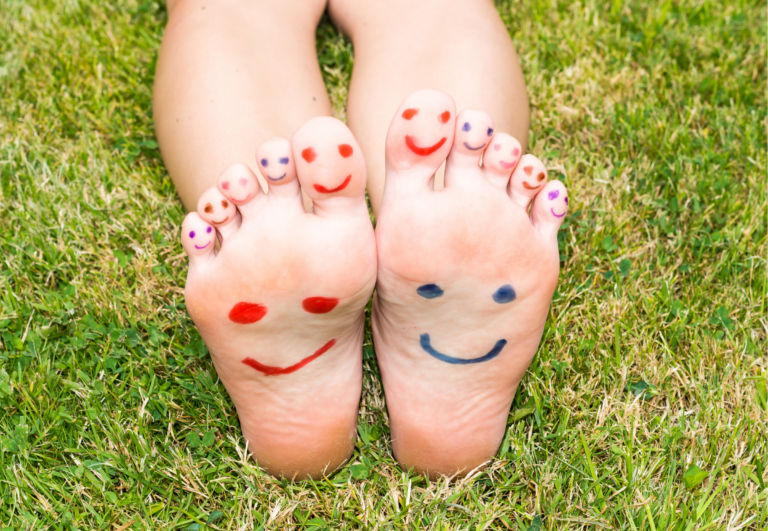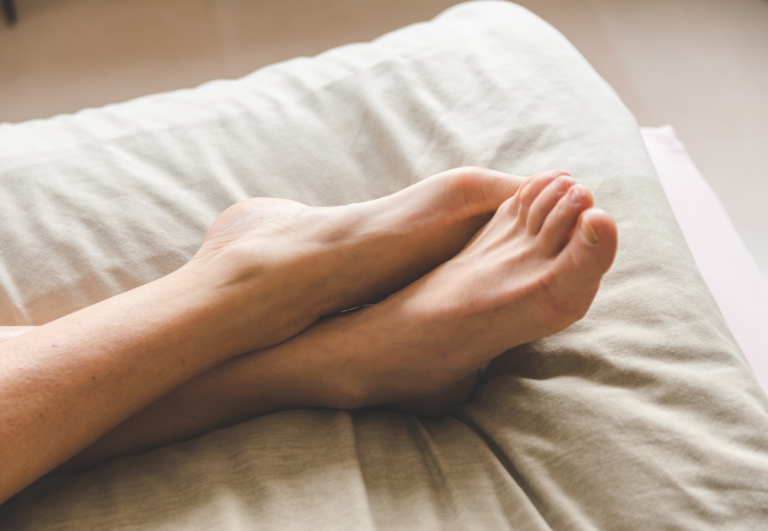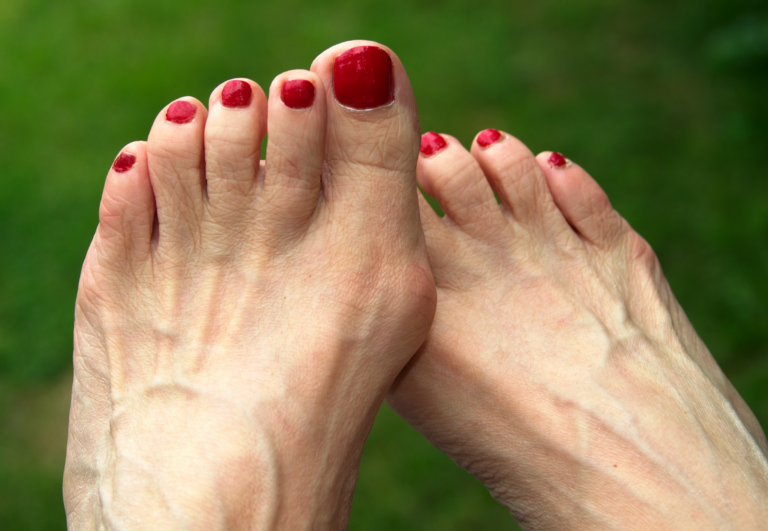Toe Spacers and Balance Training: Maximizing Stability and Posture with Proper Use
Toe spacers have become a significant tool in improving foot health and balance. As someone deeply familiar with their benefits, I’ve seen how they can assist in maintaining proper toe alignment, which in turn can contribute positively to one’s overall balance. They’re particularly useful for those whose toes have suffered from the strain of ill-fitting footwear or demanding physical activities.
Incorporating toe spacers into balance training can be a game-changer. I advise starting with a few minutes each day to allow your feet to adjust, gradually increasing the duration as your toes become accustomed to the spacers. The key is to integrate them into a comprehensive balance training regimen, ensuring that your feet—and especially your toes—are strong and poised to support your body’s stability.
Incorporating Toe Spacers into Balance Workouts
Balance training is a critical element for enhancing stability and proprioception, the body’s ability to sense movement and positioning. This type of training is beneficial for everyone, from athletes looking to improve performance to individuals seeking to carry out daily activities with greater ease.
I’ve found that using toe spacers during balance workouts helps in distributing weight evenly across the feet. This promotes a more natural foot alignment, which is crucial for proper balance. When your toes are separated, it aids in maintaining the crucial three points of contact with the ground, often referred to as a tripod stance. This stance provides a stable base for a variety of balance exercises.
Incorporating toe spacers can directly support stability and balance, which are key for athletic performance and injury prevention. Whether engaging in yoga or dynamic balance-focused workouts, toe spacers can be a valuable tool. By gradually introducing toe spacers into your balance training routine, you can also apply the principle of progressive overload to challenge your stability over time without causing strain or discomfort.
When it comes to balance workouts, I suggest starting with basic exercises like standing on one foot with toe spacers, and then progressing to more challenging poses or movements as your balance improves. Remember to listen to your body and increase the difficulty only when you feel ready. This structured approach to balance training can lead to significant improvements in overall athletic performance and daily functioning.
Practical Applications and Techniques
Toe spacers are a valuable tool for addressing foot conditions and enhancing balance and stability. Their use can lead to improved athletic performance and support foot recovery.
Using Toe Spacers for Specific Conditions
I recommend toe spacers for a range of specific foot-related conditions. By separating the toes, these devices can help with the realignment of toes and mitigate the discomfort associated with bunions, hammertoes, and plantar fasciitis. It’s essential to choose the correct toe spacers for your condition and to use them as part of an overall foot health strategy to support recovery and foot muscles conditioning.
- Bunions: Individuals with bunions may find relief by using spacers that can prevent the big toe from pressing against the others.
- Plantar Fasciitis: Spacers that stretch the foot muscles may alleviate the heel pain associated with this condition.
- Hammertoes: Spacers can help in straightening bent toes and reducing the pressure caused by hammertoes.

Effective Balance Exercises for Enhanced Stability
Incorporating balance exercises into your routine with toe spacers can substantially improve your stability and foot strength. Yoga and balance-focused training are particularly effective when performed with toe spacers.
- Yoga: Pose stability can be enhanced by wearing toe spacers, which promote proper toe alignment and increased foot muscles engagement.
- Balance Training: While using toe spacers, engage in exercises like single-leg stands or wobble board work to challenge and strengthen your foot muscles for better balance.
By using toe spacers in these applications and techniques, I’ve noticed better support in my foot structure, enhanced athletic performance during activities like running and lifting, and a noticeable improvement in balance and stability that benefits my overall movement efficiency.
Maximizing Benefits for Athletes and Runners
In my experience, toe spacers can be an effective tool for athletes and runners looking to enhance their performance. By incorporating them into your training routine, you can work towards improved foot strength and mobility.
Enhancing Athletic Performance with Toe Spacers
Athletic Gear: Toe spacers are simple pieces of gear that fit between your toes to maintain proper alignment during rest or while engaging in activities. They should be considered a part of your athletic performance regimen.
Runners’ Mobility: I’ve found that consistent use of toe spacers can lead to an increase in toe and foot mobility, which is vital for runners who require dynamic movement and balance.
Performance: Incorporating toe spacers into daily training may contribute to better foot mechanics. This often translates into improved running performance, as efficient foot movement is crucial for speed and endurance.
Foot Strength: Stronger feet can improve overall stability, reducing the risk of injuries. Athletes often neglect foot strength, but I’ve noticed that those who use toe spacers regularly report enhanced foot strength.
Here is a simple table summarizing the key uses and benefits:
| Use Case | Benefit |
|---|---|
| During Rest | Maintains toe alignment |
| Pre- and Post-Training | Increases foot strength and mobility |
| Consistent Daily Use | Can lead to improved athletic performance |
Remember, while toe spacers can be beneficial, consult with a professional for a personalized assessment before incorporating any new tool into your training routine.
Common Concerns and Considerations
When incorporating toe spacers into your routine for balance training, it’s crucial to consider how they can affect common foot ailments and the overall health of your feet.
Dealing with Common Foot Ailments and Toe Spacer Use
People often turn to toe spacers to alleviate discomfort caused by a variety of foot conditions. Toe spacers can potentially offer relief and distribute pressure more evenly across the foot, which is crucial for those with bunions, corns, or calluses. However, when integrating toe spacers into your routine, here are several key points to be aware of:
- Bunions: Persistent pain at the base of your big toe may indicate a bunion, a bony bump formed due to the misalignment of the joint. Spacers can ease the discomfort by keeping the big toe in a straighter position, reducing pressure on the bunion.
- Corns and Calluses: Caused by skin thickening due to friction or pressure, toe spacers can prevent overlapping toes and provide relief.
- Foot Pain and Injuries: If you experience ongoing foot pain or have a history of foot injuries, toe spacers could aid in maintaining proper alignment and reduce the likelihood of reinjury.
- Pressure Points and Circulation: Proper use of toe spacers may reduce pressure points and improve circulation, fostering a healthier environment for your feet.
- Foot Deformities and Flat Feet: They may also help those with foot deformities or flat feet by supporting the natural shape of the foot and promoting better balance, which can be especially beneficial during balance training.
- Toe Boxes: Ensuring your shoes have a wide enough toe box is important to accommodate toe spacers and avoid additional pressure on your feet.
It’s important to gradually introduce toe spacers into your routine, starting with shorter periods and increasing the duration as your feet adjust. While they can be helpful, toe spacers are not a cure-all and should be used in conjunction with other foot health practices.
Should you experience any acute pain or discomfort, consult with a healthcare professional specialized in foot care. Always remember that individual needs may vary, and what works for one person may not work for another.
Lifestyle Integration and Long-Term Use
Integrating toe spacers into your lifestyle enhances foot posture and can be part of a treatment plan for stronger, healthier feet. Their use alongside barefoot shoes can provide a more stable foundation during daily activities and workouts.
Incorporating Toe Spacers into Daily Life
To seamlessly integrate toe spacers into my routine, I begin by wearing them during periods of rest, like when I’m sleeping or sitting at my desk. Earthing or EarthRunners sandals, designed to mimic a barefoot style, complement the use of toe spacers during the day, promoting a natural foot posture. Here’s a simple weekly plan to start:
- Monday and Wednesday: Wear toe spacers while at my desk for 30 minutes.
- Friday: Combine toe spacers with barefoot shoes for a light, indoor workout.
- Saturday: Enjoy a pedicure using toe spacers to maintain foot health.
Considerations for Progressive Use of Toe Spacers
I adopt a progressive overload approach to increase the duration and frequency of my toe spacer use, catering to my individual needs. A suggested treatment plan could be:
- Week 1: Wear toe spacers for 30 minutes each evening while relaxing in bed.
- Week 2: Gradually increase to 45 minutes and include a gentle workout session.
- Week 3: Assess comfort and foot strength, adjust usage as needed.
Each step is designed to bolster a stable foundation, steadily improving the health and alignment of my feet without causing strain.
Toe Spacers and Their Benefits
Toe spacers, known for their role in promoting foot health, offer advantages such as realigning the toes to natural positions and providing comfort for those with toe deformities.
The Role of Toe Spacers in Foot Health
In my experience with toe spacers, I’ve found that they’re essential for maintaining the health of our feet. They serve to spread the toes apart, which can correct and prevent the overlap of toes. Comfort is a major benefit, especially for individuals suffering from bunions or other toe deformities. By creating space between the toes, spacers reduce friction, which in turn alleviates discomfort and pain.
Realigning toes is another significant benefit. As the big toe maintains proper alignment, the risk of developing bunions and other deformities can be reduced. By improving toe separation, balance and gait may also be enhanced. This makes toe spacers particularly helpful for athletes and those engaging in balance training.
Different Types and Materials of Toe Spacers
When choosing toe spacers, one must consider the various types and materials available:
- Gel: Soft and comfortable, ideal for daily wear.
- Foam: Lightweight and often used for temporary relief.
- Rubber, Silicon, Silicone: These materials offer durability and can be ideal for long-term use.
The most commonly used materials are silicon and silicone due to their adaptability and hypoallergenic properties. The choice of material will depend on individual needs, such as the level of support required, the presence of allergies, or the desired frequency of use.
Gel toe spacers are popular for their snug fit and ability to conform to the toe shape, providing a balance between comfort and support. Meanwhile, foam toe separators may be preferable for short-term relief after a long day on one’s feet. Lastly, rubber options are appreciated for their firmness and long-lasting form.
When incorporating toe spacers into your routine, it’s crucial to select the right material to ensure both effectiveness and comfort.





